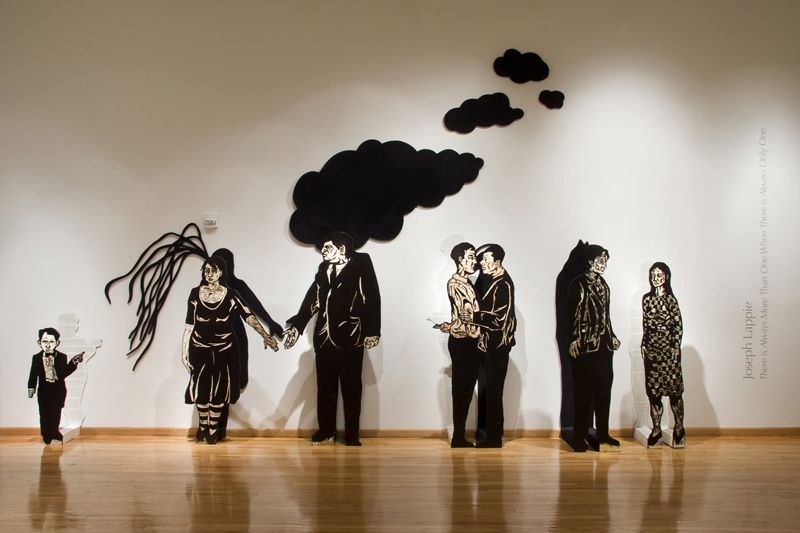There Is Always More Than , When There Is Always Only One, 2007-2008: Relief Ink, Birch Plywood, Faux-Suede, Text
Our Multiple Selves
Aspects of one’s character can be broken down into many pieces inspired by history, trauma, or experience. There Is Always More Than One When There Is Always Only One presents six alter egos interacting with each other. Every person possesses, exhibits, maintains, or represses, traditional masculine and feminine traits. Here the male and female are all part of the same individual. The figures are the superficial masks which interpersonal relationships, and to a great extent the definition of our own “self” are initially based on.
Behind these outward appearances lie what Carl Jung called shadow aspects, or our archetypes: the people we are, the things that make us, the things we hide, sometimes even from ourselves. In this case, doubt, love, fear, insecurity, predatory nature, and determination. These characteristics are not alone, and only the beginning of our unconscious self. Each individual is made up of countless others, each of them, struggling and pushing forward to assert their presence. This multitude is balanced by an individual’s “hero journey” which consists of a call to action, response, trials, and return. The textual shadows present stories that are truth without being the truth, utilizing excitement in an attempt to maintain the reader’s attention.
Are We Good, Or Are We Bad?
French philosopher Jacques Derrida suggests that the complete dismantling of axioms, or preconceived truth, is a powerful way towards a greater understanding of our surroundings, language and motivation. The nature of this artwork suggests that our best traits are also our worst, our worst may be our best, and that that level of polarization only ensure that there are many stops in between. In order to see our real reflection try lifting your eyes and gaze at one another.





